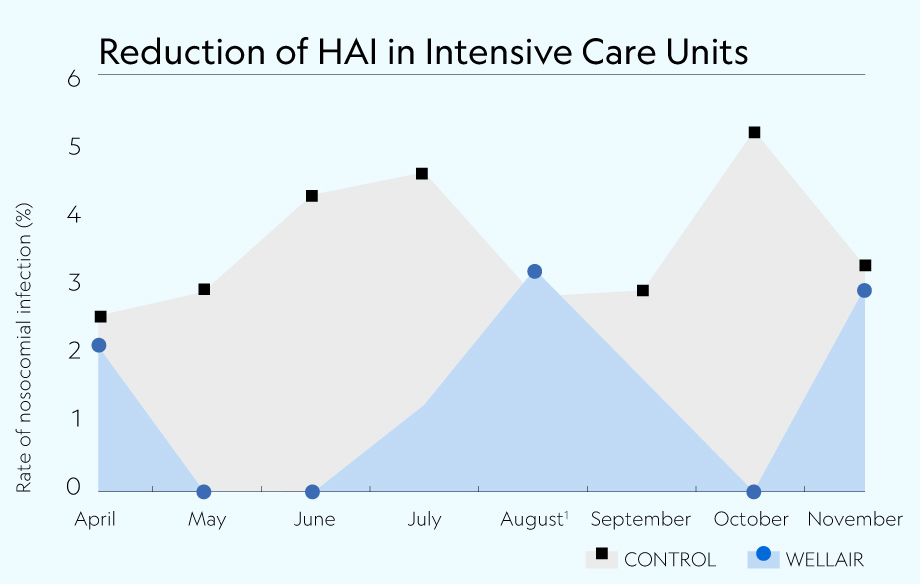Evaluation of WellAir’s Protect 800/900 and Defend 1050 in hospital ICUs
- Authors
- I. Arıkan, O. Genc, C. Uyar, M.E. Tokur, C. Balcı, D. Percin Renders
- Facility
- Hospital ICUs, Turkey
- Download
- Full Report
Objective
To detect the number and types of micro-organisms present in the air and on high-touch surfaces in ICUs, and to evaluate the effectiveness of air purifiers in reducing the microbial load and thus the rate of nosocomial infections in ICUs.
Methodology
This intervention study was conducted in two similar ICUs between May to November 2020. WellAir’s (Novaerus) air purifiers were located in the intervention ICU for 2 months. Routine cleaning procedures and high-efficiency particulate air filtration continued in the control ICU as well as in the intervention ICU. After 2 months, the air purifiers were moved to the other ICU for the next 2 months to reduce any possible bias in the results. Air and surface samples were evaluated.
Summary of Results
The evaluation of the change in the intervention ICU over time revealed a significantly lower colony concentration in the air and on surfaces on Day 60 compared to Day 1 (P_air<0.001 and P_surface<0.001). There was a significant positive correlation between the number of colonies detected and the rate of hospital-acquired infections in the intervention ICU (r=0.406, P=0.049) and in the control ICU (r=0.698, P=0.001).

Above Figure: Distribution of the rate of hospital-acquired infections by study period in intensive care units in both phases of the study. August was the period without air purifiers. Phase 1, May 15th - July 15th; Phase 2, September 15th - November 15th.
Conclusion
Using WellAir’s NOVAERUS (Protect 800/900 and Defend 1050) air purifiers, in addition to the hospital HVAC systems, may be an effective way to reduce the microbial load in the air and surfaces and thus hospital-acquired infections.